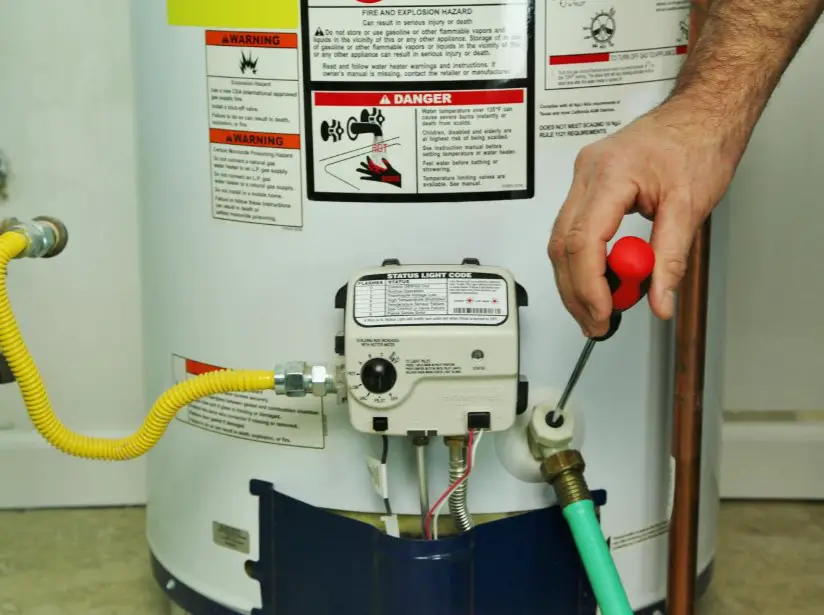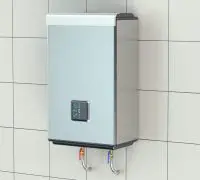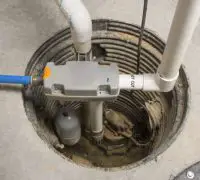If you're looking to fix or replace your Heating or A/C system, we can connect you with a reliable and cost-effective professional in your area.
When it comes to the tankless water heater, flushing may be the only thing you need to take care of for ensuring its reliable performance. A failed flushing may alter the service life and lead to unexpected fuel expenses. Even if flushing isn’t challenging, you should consider also have a professional check of the unit once a year.
Anyone that isn’t the technical type should also stay safe and hire a professional for the first flush of the unit. Take notes, pay attention, and look carefully to what the professional is doing.
Page Table of Contents
Why is it important to descale a tankless water heater?
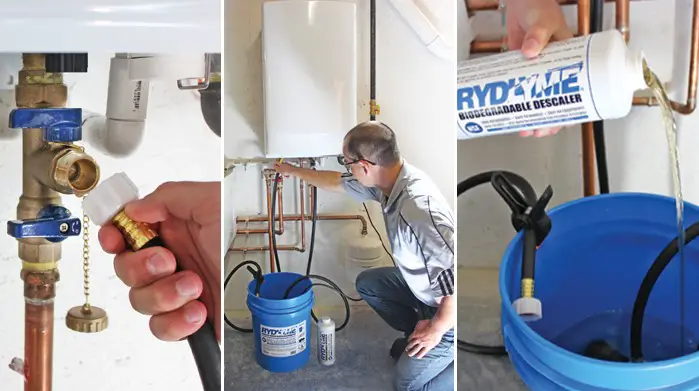
The limescale build-up is going to have a bad influence on the tankless water heater. Even if the heaters don’t leak when you’re not caring for them properly, they can develop problems which are expensive to fix.
The manufacturer recommendations may vary, but most note the flushing to be necessary once a year.
Here are the main aspects to consider descaling:
- Hard water- the frequency of the flushing depends on the hardness of the water supply. The mineral content within the water gives the hardness of water, with areas presenting a higher risk for harder water. High mineral content is going to build-up inside the unit. The heat exchanger doesn’t react well to lie scale, with even small amounts altering the performance of the tankless water heater.
- Limescale build-up- The limescale build-up only increases in time, which is why the burner cycle may take longer. It happens because it has to compensate for the lost efficiency. Keep in mind that most manufacturer warranties will not cover any damage that the limescale build-up may have caused.
Side note: Some units may show a diagnostic code if the limescale build-up reaches a level that makes the flushing mandatory. Even if your group may come with this feature, it’s still better to flush the heater before the code triggers.
What’s the proper way to flush a gas tankless water heater?
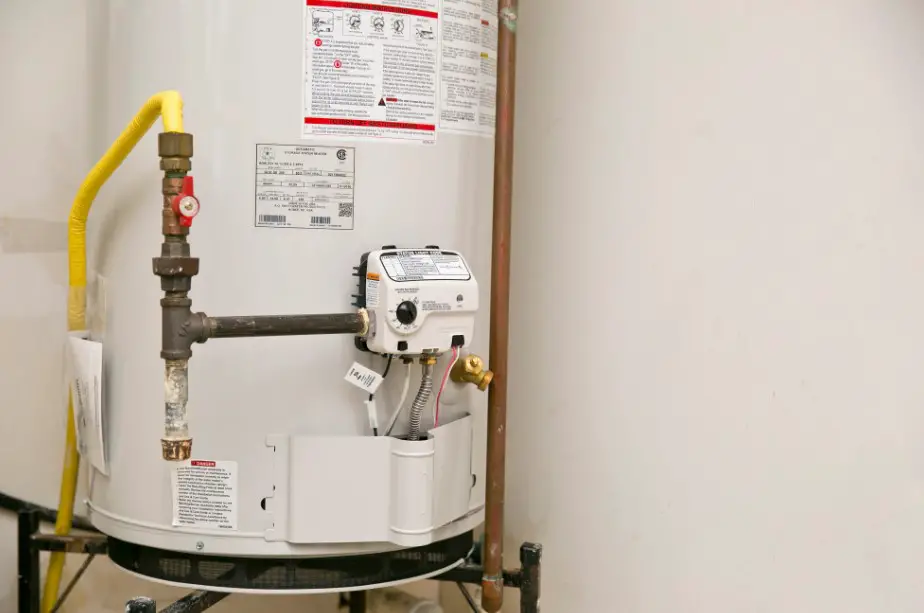
Many tankless water heaters feature an Isolation Valves with Service Port. Should your unit doesn’t come with one, you should get in touch with a plumber for installing them. Here’s what you need:
- Needle nose pliers
- Adjustable wrench
- Screwdriver
- Non-contact voltage tester
- 6ft washing machine hoses
- Submersible pump
- 4-gallons of food-grade white vinegar (virgin).
The longer the time the vinegar circulates, the better it is for the heater. The Isolation Valve with Service Ports has to be installed, and you shouldn’t begin the procedure without it.
Let’s see the steps to follow when flushing gas tankless heaters:
- Begin with cutting off the electrical power to the tankless water heater. You also need to remove the access panel and give the wires going into the terminal a test. Use a non-contact voltage tester for checking if the power is disconnected or not.
- Continue with closing the Hot and Cold Shut-Off valves. You don’t want the cold water to get inside the unit again nor go into the home’s plumbing system.
- Open the Hot Water Pressure Relief Valve for reducing the pressure on the hot water line. The released water may be boiling, so make sure you are cautious.
- Link one end of Hose #1 to the Cold Water Service Port, whereas the other end you connect it to the Submersible Pump. Don’t forget to put the Submersible Pump inside a 5-gallon bucket.
- Do similar for the ends of Hose #2, but make sure to connect them to the Hot Water Service Port. You need to place the free end into the bucket.
- Put 4-gallons of white vinegar (food grade and virgin) inside the 5-gallon bucket. Never dilute the vinegar.
- Open the Hot and Cold Service Ports, while turning the Submersible Pump on. The vinegar has to go through the tankless water heater for one hour or so. The process is supposed to break down and flush out the whole limescale build-up. It’s better than the pump operated with 4-gallons per minute speed. If it’s lower than that, the process is going to take longer.
- Don’t forget to turn the submersible pump off and get rid of the vinegar.
How to rinse the vinegar from the unit when flushing is over?
With the flushing being done, you also need to rinse the vinegar from your heater. Check the steps to do it right:
- Remove the end of the Hose#2 that you didn’t attach from the bucket. Place it outside or in a drain
- Put the Hose #1 aside, while closing the Cold Water Service Port and opening the Cold Water Shut-off Valve. Try your best not the open the Hot Water Shut-off Valve.
- Freshwater will start flushing out the remaining vinegar, within your heater through the Hose #2.
- Let the water run for 10 minutes or so, and don’t forget to close the Cold Water Shut-Off valve so that the water doesn’t flow through the heater.
- When the water is done draining, place the Hose #2 aside and close the Hot Water Service Port.
Is flushing the electric tankless water heater any different?
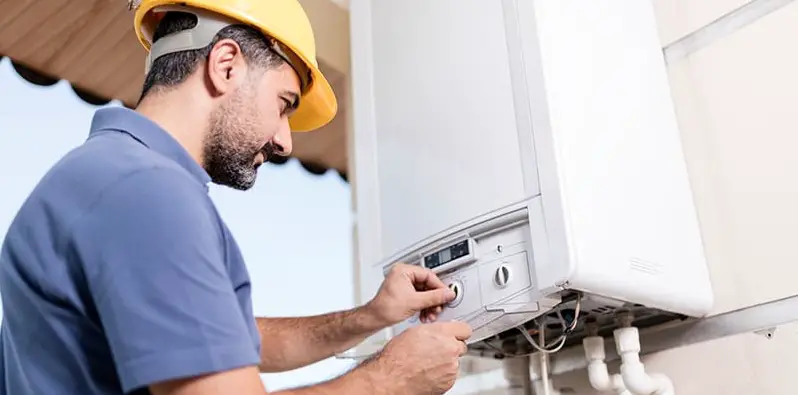
Even if the electric tankless water doesn’t need maintenance as much as the gas heater, you still need to run regular checkups. Hard water poses the same risks for limescale build-up, especially after long-time use.
Once again, you should do the flushing whenever it’s necessary, even if most manufacturers recommend only doing it once a year. The level of hardness of water is what impacts the frequency of the flushing.
No matter how often you decide to do it, always give the owner’s manual a good read. There may be many different features between manufacturers. The last thing you want is to damage the heater in any way, which may lead to higher spending for the repairing.
Flushing the electric tank-less heaters is more straightforward than in the case of gas units. Here’s the proper way to do it:
- Begin with turning off the electrical power to the heater at the breaker
- Continue with closing the Cold Water Shut-off valve. You don’t want any water to get inside the heater by this time.
- Open the faucets inside your home for draining the water from the heater.
- It’s time to close the Hot Water shut-off valve
- Finish by putting the cover aside. Check carefully to see if there’s any electricity getting to the heater. A non-contact voltage tester is the best tool to use.
In the case of the electric tankless heater, the way you remove the electrical heating elements is essential. Keep reading for our recommendations:
- You have to remove the screws so that you secure the wires attached to the top of the heating elements
- Loosen the hexagon brass top of the heating element with a wrench. Make sure that you rotate counter-clockwise, removing the heating element from the tank (made of copper).
- Take a look at the heating elements. Should you notice any cracks, you should place new ones.
- Place the heating elements inside the copper chambers of the heater.
Do you also use vinegar for the electric tankless heater?
The short answer is “yes,” and here’s how to do it correctly:
- Put white vinegar (food grade and virgin) inside the chambers (the heating elements have to be inside)
- Let the vinegar work for as much as 120 minutes.
- When time is done, you need to drain the vinegar. Remember to also replace the heating elements. You should use a clockwise rotation for tightening them.
- Secure the wires to the top with a screwdriver.
Don’t forget that you also need to flush the vinegar from the unit:
- Begin with opening the Cold Water Shut-off valve, allowing the water to get inside the tank
- Look for any leaks while the tank is filling
- Continue with opening the Hot Water Shut-off Valve
- You should open more than one hot water faucets, running the water for 5 minutes or so. It’s going to flush the vinegar, but also remove air pockets inside the lines.
One last recommendation
Flushing a tank-less water heater isn’t the most challenging job around the house. Make sure always to don’t hesitate to hire a professional when you have no mechanical skills. There’s no shame in asking for help!
We can definitely connect you with a trusted provider in your area to repair, replace or maintain your heating and A/C systems. Why not let us find a professional for you?
